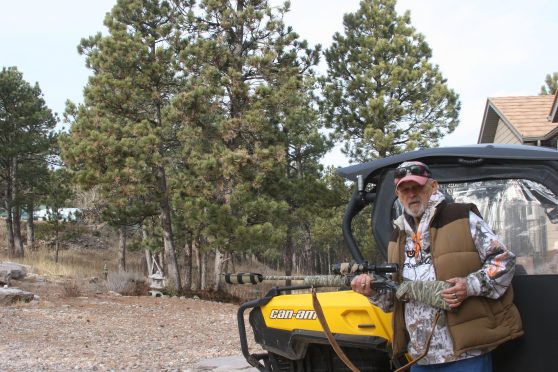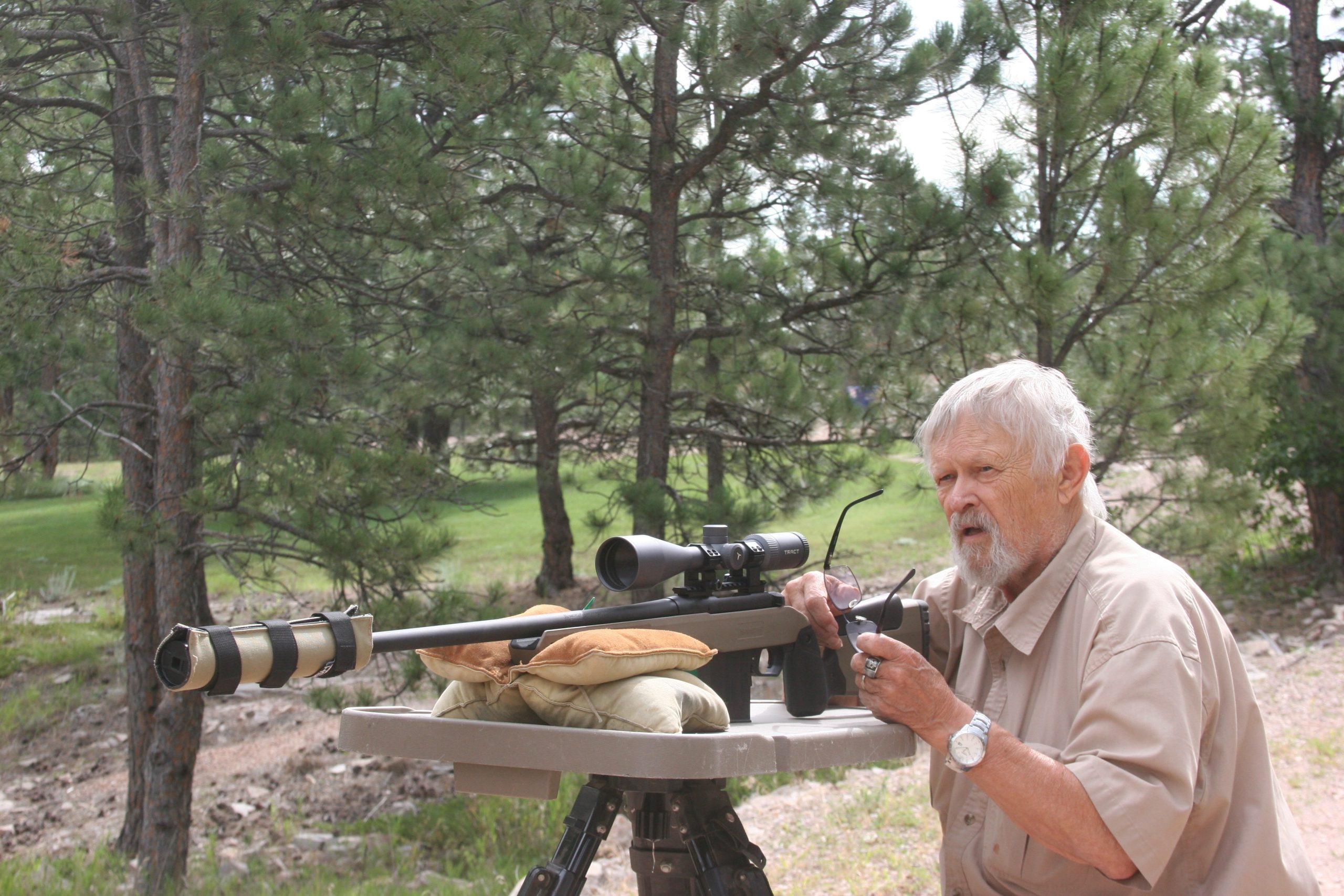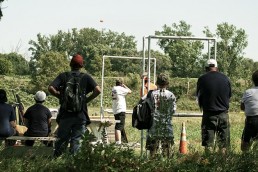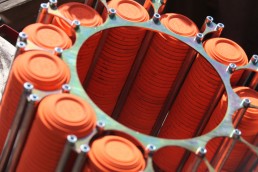‘Ghost Guns’ for Silent Hunting and Shooting
SHARE THIS POST
In early 1962, while several other crow hunters and I spent countless weekends shooting across the hardwoods and pine forests of Minnesota, we hatched the bright idea for a screw-in suppressor system designed just for shotguns. The commercial final solution was Metro Gun Systems. After over 5,000 sales, with many others jobbed out to satellite outfits, the name and use has stuck with shotgunners across the U.S. and several foreign countries, right up to present time.
As interest in quiet shooting systems slowly developed, the natural next step in the process was building a “can” full suppressor system for a shotgun, built under the name Orion. With that development came even more directed research into the possibilities of using suppressed firearms across the board for both rifles and shotguns alike. The outcome took about a decade to gel and the use of quiet firearms, dubbed “ghost guns,” came to pass among our little group of fur- and feather-chasing hunters.
This was well ahead of the pack regarding suppressed firearms. With my move to South Dakota—a very open rights state—I went head over heels with the concept of using stealth methods in the field in search of everything from trophy whitetails and turkeys in season to coyotes and crows during the off-season months.

Buying a suppressor
Right off, I must say that not all suppressed system on rifles, handguns or shotguns produce the same results in terms of accuracy or sound reduction. In general, you get exactly what you pay for. I have a buddy who thought he was ahead of the curve since he already owned several suppressor cans. But when he picked up a bargain basement special and tied it onto his DPMS AR-10 in 308, everything about that cheap suppression system went straight downhill fast.
Each manufacturer works through suppressor designs. While looking much alike on the outside, the can insides are very different. Some use corkscrew baffles and some use round plates. Some use a large number inside the tube chambers and some use just a few. The fact is, go by two things when checking out a suppression system. First, research the company’s history; and second, if possible, put an ear to the actual product being fired. That second part is tough, but if you have a bunch of buddies who own these systems it gets a bit easier.
Every year, I go to the big SHOT SHOW writer’s event in Las Vegas, Nevada. On the writer’s day buy-and-try deal, I try to shoot suppressed weapons using a variety of suppressors in the process. Take my word for it: It is a real education as to variations in products.
The best suppressor I have ever shot—and own two of—is built by Gemtech. I obtained my first suppressor from this company: a rebuilt “can” that came directly from the Middle East, set up with a quick-release attachment to my AR-15. This suppressor and had been completely restored for test purposes. I retain that can because it is nothing but amazing in terms of sound reduction and accuracy retention.

Yes, accuracy, because shooting your rifle with or without the suppressor can mean a change in impact points. I can say for a fact that I have never experienced a change from suppressor to a standard barrel application on the same rifle using the Gemtech Mil Spec designed system. This includes almost two decades of use.
As a second option, I also use the Gemtech 300 Win mag designed “can,” again Mil Spec graded, and as such use it from 22 LR through 300 Win Mag. The suppressor is silent—end of story—regardless of what you screw in it onto. The complexed baffle system in this “can” not only suppresses the big 300 Win Mag, but when installed on the 22 WMR, you can almost hear the firing pin contact the cartridge rim as the trigger is deepness. I run this can on my 6.5 Creedmoor, 308 Winchester, .224 Valkyrie, as well as the previous mentioned rifles. You could say this brand of suppressor is the Jack of all trades, and the system has earned its way into my options as field tools. Remember, you’re going to get what you pay for much of the time, and less cost means more noise downrange in most cases.
When you buy a suppressor system, use a solid well-known company to take care of your needs. You will need paperwork for the ATF, as well as special thread adapters for each firearm to be used with the system. Because it can take a full year for the government to get its act together regarding the issuing of the proper stamp for the suppressor, you want to deal with an outfit with their head in the game, doing all the federal paperwork for you. If an outfit is willing to just sell you a system over the counter, walk away fast. If not done correctly, this whole deal can get you into a pile of trouble. Remember, ATF is a federal agency, and those boys don’t play any games.
I use Dakota Silencer for all of my purchases in this area unless I am working with a direct manufacturer’s design. Mac Brothers in Sturgis, So. Dak; Gemtec; and my own shotgun-related Metro Gun Systems tubes are a totally different story.
Be prepared to wait a long time after ordering to see your suppressor. Dakota Silencer, for example, will sell and hold your system for was long as it takes the government to get your paperwork cleared. Buying one of these systems is exactly like buying a gun through an FFL dealer, but even more complicated.

Shotgun suppressors—a whole different breed
The short of it is, shotguns are darn hard to suppress. Because of the massive bore sizes in 12- or even 20-gauge, it takes one heck of a can to generate the required dampening effect to reduce the blast of a scattergun. Take the old film No Country for Old Men. That nutcase had a 12-gauge with a suppressor the size of a garbage can attached to it. That was no Hollywood gimmick. The guy that set that prop gun up know his stuff.
In many cases, even companies selling suppressors for 12-gauge shotguns will use my personally designed Federal Cartridge Top Gun loads, subsonic in design, when displaying their wares in public on a live fire range. That is because it is near impossible to suppress to any major degree a full house (power) shotshell round. Even in rifles, much of the time, reduced loads are used with suppressor systems to gain the desired effects regarding sound levels.
Not to blow my own horn, but since 1998, I have successfully developed and sold over 5000 systems through Hastings barrels and Metro Gun Systems that do not require a federal tax stamp, are reasonably priced, and are regarded by the feds as an extension system labeled as a shotgun “barrel choke.” Using subsonic ammunition, the Db rate (sound level measured) is a light 72 Db. That is the sound of a truck door closing briskly. Most discharges will generate about 140 Dbs in perceived sound for a full house load in a 12 bore.
Are you enjoying this post?
You can be among the first to get the latest info on where to go, what to use and how to use it!
Using my 410 system, which is new in 2023, the Db is further reduced to 68Db using Little Gun powder-driven reduced charged loads. These hold energy and sound suppression the same with subsonic 410 bore loads offered by Backridge Ammunition Tenn., in #9 pure tungsten shot for turkeys.
I have also designed a full Metro Gun Silencer can and sold them for a time through West River Machine, Rapid City, So. Dak. But I have found that the long barrel Metro gun System in the choke-style, gas venting unit is as good as the full suppressor can and retains a market cost of 1/8th that of that full-can-style shotgun suppressor ($289.00). The bottom line is, take much of what you see in print with a grain of salt and do your research before getting into one of these suppression systems.
Using a suppressed firearm for sporting purposes
About 20 years ago, I locked down a Gemtech mil spec suppressor on my AR-15 and hit the trail with some coyote calls and time on my hands. In short order, I found out that I owned the river flats where I hunted those song dogs with regularity. A good suppressor pays massive dividends over time, just by the fact that stealth beats making a pile of noise every time a rifle or shotgun round goes off.
Being I have sold my Metro shotgun suppressor system for about 2 1/2 decades, I can say for certain that most requests regarding suppressors comes from both coasts in the USA. Lots of folks on both coasts tend to get in the way of hunters some of the time. (Someone calls the sheriff every time a gun goes off, making it a shots-fired call). As a retired police officer, I can attest that a call like that leaves you dead cold in your tracks at times. I have been with a couple of buddies when each hunter was directed to lay his weapon on the ground, keep his hands where the young deputy with his hand on his gun could see them, looking like he just saw a ghost. That’s no fun for anyone.
As to net effects of sound reduction systems, the end product is a total win for everyone. I have sold suppressors to USDA officers and agents, and to police departments that screw one of my systems to an 870 Wing Master and, using a low-sound slug, dispatch a wounded animal in urban areas after a car has hit them.
In my opinion, the silencer is best applied using hunting techniques associated with bowhunting. That is to say, use treestands, ground blinds and high-tech camo, with you rifle or shotgun well-fitted with camo. In effect, shooting from close range (20 yards or less), using good sights for accurate slug or bullet placement, and all movements associated with very silent stealth by the hunter.
In general, I like to shoot subsonic ammo, and as such, the energy is reduced as well as the sound level. That means cutting back extended range to allow enough velocity to carry the correct amount of terminal energy. When 400-plus-yard shots are targeted on a big game animal, all bets are off; and now, full house loads are required rule. I will say that, in the event you miss at long range, the critter in most cases has no idea it has been shot at. That makes for a whole new angle on longer-range big game hunting with a suppressed rifle.
Two years ago, with the aid of a spotter, I locked onto a buck at 337 yards with two others standing very close by. The wind was 40-plus mph on the top of a deep draw, and air temps were hovering around zero. This was a tough shot to judge since the winds decreased as the bullet descended into the deep draw. I got the drop correct, and Kentucky windage was also spot on, and my first round dropped the deer stone deal (6.5 Creedmoor 140-grain ELD). The point is, the remaining bucks never left the small opening in the buck brush cover. These critters had absolutely no idea I had even fired my rifle.
Turkey hunting with subsonic systems also is a different experience. I have dropped a gobbler at 30 yards with the 410 Metro Gun System and the sound was just about the same as a CB cap. This load, however, was a 3-inch, 1/2-ounce of #9 pure tungsten. That spring, three birds fell to the little subsonic shotgun in the same way. One and done was the deal in both big game and gobbler hunting.
In terms of ammunition for subsonic hunting, just about the time everything was running as smooth as silk, Covid hit and everything changed. Currently using full-can type suppressors, just about anything in center fire is workable. Subsonic ammo is a bit dicey at best.
Federal Cartridge makes the Top Gun Subsonic (my original load design) but supplies and production runs are limited. Backridge makes runs of 12-gauge and 410 bore in tungsten and other related nontoxic shells, but it is when materials are available and the company has time between much larger, mass orders for target and game loads. In any subsonic load area—rifles or shotguns—the winners are hand loads. For shotguns, take about any standard trap load in a reloading manual and drop three grains, give a sound check and go downrange fast. Rifles are much the same in many cases.
Price
Price points regarding a suppression system for your rifle in a muffler “can” design will run about $800 in most cases, with a stamp fee inflicted on you by the ATF. This fee is required by law, and no reputable dealer will work with you if this step is not taken.
Metro Gun, being a tube extension versus a “can,” is much less expensive to build, and the total price, including shipping, with no ATF stamp required is $298 to your door. Metro Gun’s “can-style,” 12-gauge suppressor, much like rifle models, is currently $800, not including the $200 ATF stamp.
If you want to see a good selection of different models and gain good information regarding how to proceed, contact Silencer Central in Sioux Falls, So. Dak.
MWO
SHARE THIS POST
Did you enjoy this post?
You can be among the first to get the latest info on where to go, what to use and how to use it!
L.P. Brezny
Writing on outdoor subjects for over 40 years, L.P. Brezny has written four books on shotgun and rifle (ballistics and performance). He’s an expert at smoothbore, and high-power, ultra-long-range shooting. He’s a specialist, producing reviews covering general products used in the outdoors industry.



